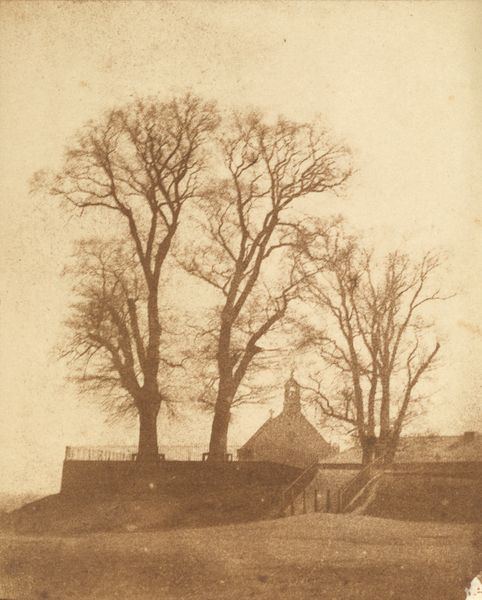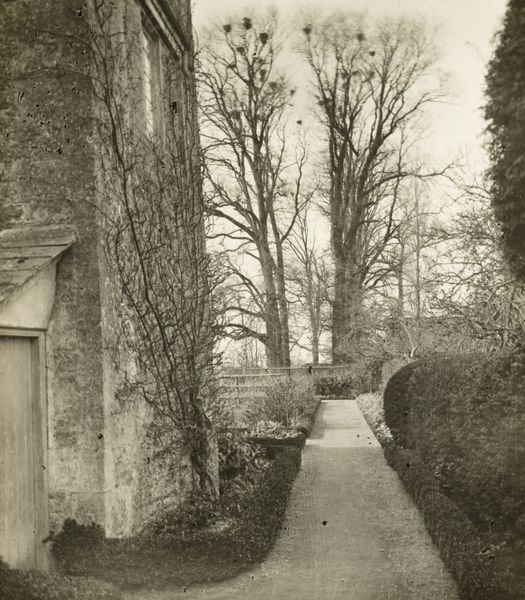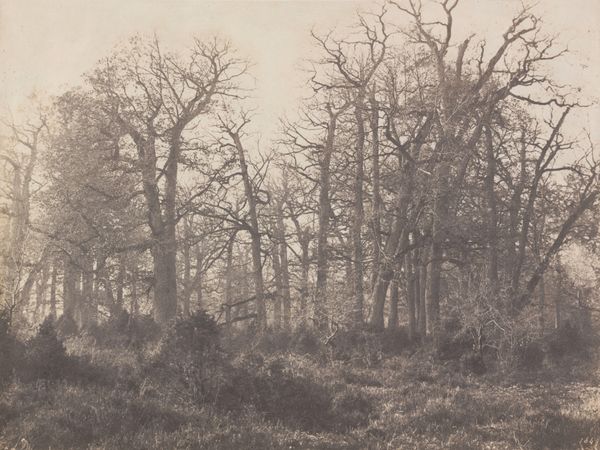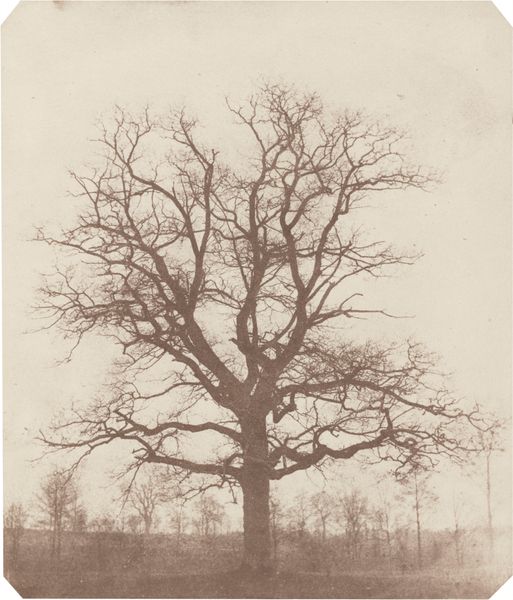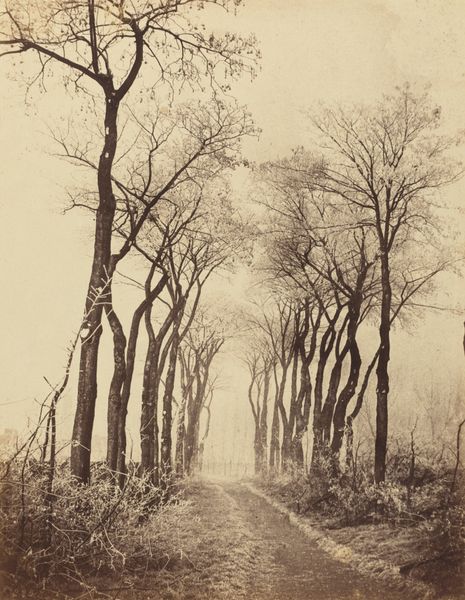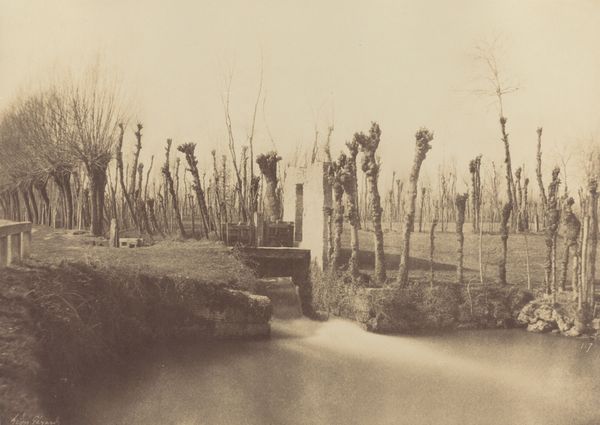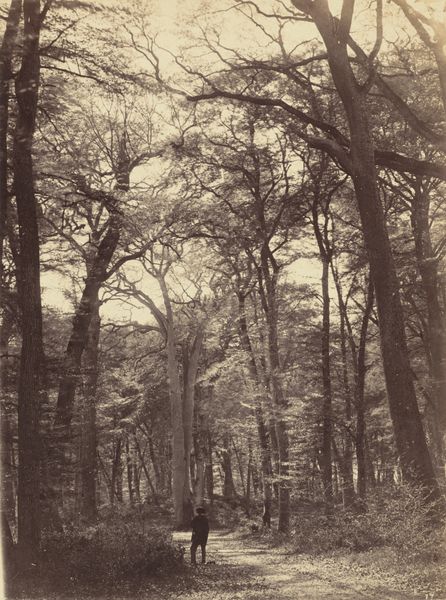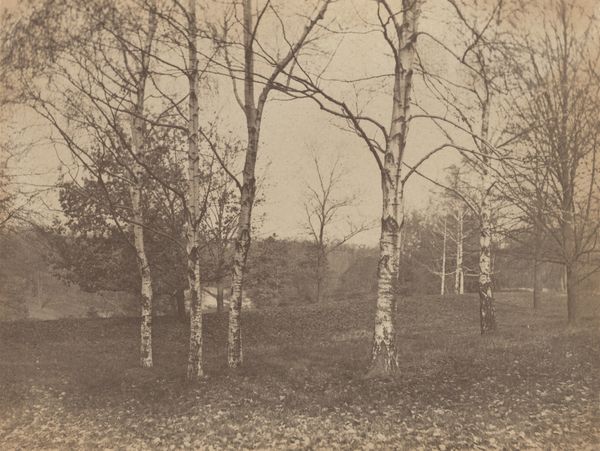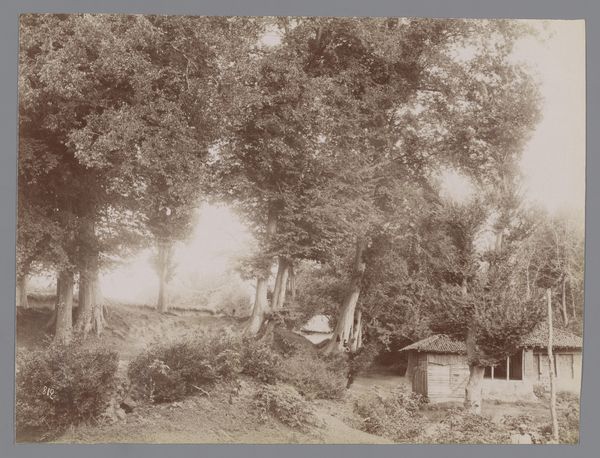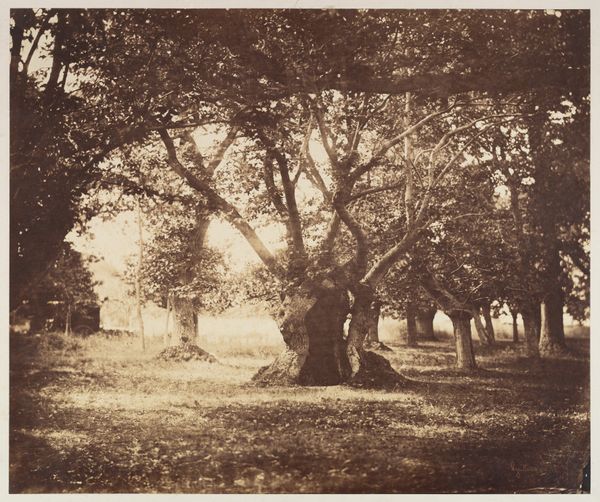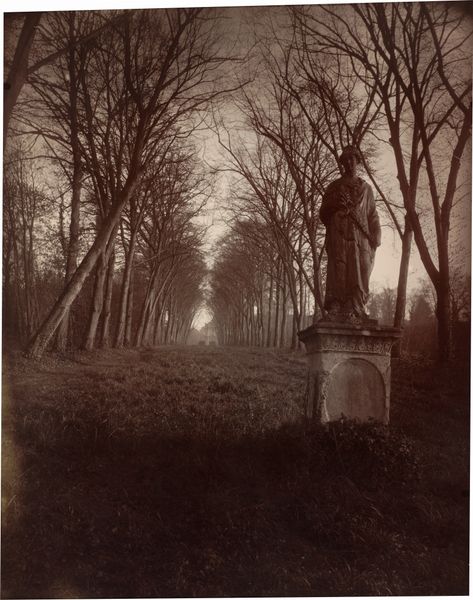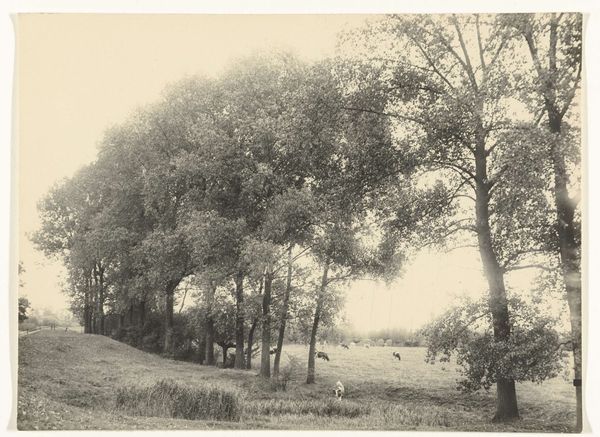
photography
#
pictorialism
#
landscape
#
photography
Dimensions: 8.2 × 8.2 cm
Copyright: Public Domain
Curator: This platinum print, entitled "Kelmscott Manor: Road and Entrance," was taken in 1896 by Frederick H. Evans. It presents a path leading toward the historic Kelmscott Manor, a place strongly associated with William Morris. Editor: It's remarkably atmospheric. The almost skeletal trees against the pale sky create such a stark and, I have to say, slightly melancholy mood. Curator: I find the choice of Kelmscott particularly significant. It became a utopian ideal in Morris's mind, a sanctuary from industrialization, impacting his work and socialist ideologies. Evans's depiction elevates this Manor as a symbol of idealized rural England. Editor: The textural contrast really grabs me, from the roughly woven fence to the more polished surface of the building stone, each speaks to a different type of labor and interaction with the landscape. Curator: Indeed. This echoes the Arts and Crafts movement that promoted a return to handmade goods as a response to mass-produced items, championing honest craftsmanship. Editor: Considering the era's prevailing photography, this choice of process speaks volumes. Platinum prints give that incredibly smooth, almost ethereal finish – quite the contrast from, say, a quick snapshot intended for purely documentary means. You're right to see it as elevating the ordinary. Curator: Yes. Evans sought to create photographs that held the same aesthetic value as paintings or drawings. He was active in photography circles advocating it as an artform in its own right, influencing future pictorialists. Editor: I see in it too the shadow of industrial labor creeping even into the idyllic: the trees pruned almost mechanically; it gives a structured feeling that contrasts the natural sprawl of branches. It adds tension. Curator: That tension certainly mirrors the societal anxieties of the time – an attempt to cling to pastoral beauty amid growing urban and industrial sprawl. Editor: Considering all the human processes and intent embedded, one recognizes that nature here is a product of deliberate design and cultivation, laden with symbolic purpose, a constructed vision. Curator: Ultimately, this piece goes beyond a mere image; it’s a carefully crafted argument for valuing art, craftsmanship, and our relationship with history and landscape. Editor: A fascinating dialogue between the organic and the artificial that reminds me of art's constant engagement with material, history and society.
Comments
No comments
Be the first to comment and join the conversation on the ultimate creative platform.
